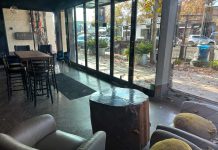County supervisors decide on pro-ballot signatories: U.S.
Representative Mike Honda (D-San Jose), Santa Clara County Sheriff
Laurie Smith, President and CEO of Applied Materials Michael
Splinter, Sunnyvale Mayor Anthony Spitaleri and a doctor from
Stanford.
Does it really matter who signs a ballot argument in favor of a nearly $1 billion bond?
It does to the Santa Clara County Board of Supervisors, which voted unanimously this morning to approve five signatories to an argument in favor of a November ballot measure requesting $840 million in general obligation bonds to fund the first phase of Santa Clara Valley Medical Center’s Seismic Safety Project. If it passes, the measure will also provide a funding to help replace medical facilities in or near downtown San Jose that were lost when the San Jose Medical Center closed in 2004.
The pro-ballot signers include U.S. Representative Mike Honda (D-San Jose), county Sheriff Laurie Smith, President and CEO of Applied Materials Michael Splinter, Sunnyvale Mayor Anthony Spitaleri and a doctor from Stanford University.
While these names seem to garner voter support, Supervisor Blanca Alvarado asked why Smith – a popular name among voters in general, Republicans especially – should sign instead of Don Gage, the board’s very own GOP representative.
“Why the sheriff over someone like Don Dage?” Alvarado said to her colleagues. “I wonder how (Smith) can garner more votes than our own Republican Don Gage.”
Gage jokingly pumped his fist in the air at this remark before mentioning that Splenter, Spitaleri and the Stanford doctor are largely unknown to District One voters, which includes Gilroy. Honda and Smith were probably the only names most Gilroyans would recognize, Gage said, but he ended up joining the entire body in supporting the five names recommended by the Valley Medical Center Seismic Safety Committee. The committee had surely done its research on whose signatures would help pass the bond measure, supervisors said.
The deadline for that committee to gather the five signatures is 5 p.m. August 13. If someone files an argument against the board’s pro-bond argument, which will appear below the measure language in voter mail-outs, the supervisors have until 5 p.m. Aug. 20 to pen a rebuttal.
The vast majority of the $840 million would be used to bring SCVMC into compliance with the California Seismic Safety Act, passed by the state Senate in 1994 after the Northridge earthquake disrupted 23 hospitals across the state. The act established requirements for hospital seismic safety and aims to prevent the closure of half the 574 beds at the Santa Clara Valley Medical trauma and burn center. Phase one must be completed by 2015. At this phase, hospitals must be able to remain standing during a major earthquake and occupants able to exit safely. The remaining $50 million will go toward medical facilities in downtown San Jose. The location and precise nature of the replacement facilities is the subject of ongoing studies by the county and the city of San Jose.
“I cannot emphasize enough how critical and important this is,” County Executive Pete Kutras said earlier this year. “Santa Clara Valley Medical Center is critical to the local hospital network. If we do not become seismically compliant, we will lose half of our beds. This includes trauma, burns, spinal cord injury and many other services vital to the community’s health.”
SCVMC is currently the largest provider of care in Santa Clara County, with one in four residents in the county receiving care at SCVMC over a four year period. SCVMC is only one of two burn-trauma centers north of Los Angeles and is a high level trauma center for both adults and children; a reduced number of bed would likely force SCVMC to close these services.
The number of patients seeking care at Valley Medical Center has increased 45 percent since 2000, as San Jose Medical Center and other area hospitals stopped accepting Medi-Cal patients. The loss of the additional beds could create a serious void in the health care safety net and affect both insured and uninsured patients.
Under the proposed project, several older structures would be removed and replaced with buildings that meet current seismic standards for acute-care hospital facilities. The project would be accomplished in two phases, including the demolition of several older structures and construction of new buildings and the replacement of 272, or half of the hospital’s acute care beds. At full build out, the size of the hospital would increase by approximately 393,000 square feet (39 percent) to a total of 1.4 million square feet.
“Santa Clara Valley Medical Center is an essential part of the safety net for everyone who lives in our county,” Board Chair Supervisor Pete McHugh said earlier this year. “Finding a way to bring the hospital into compliance is something we have to do.”
Supervisor Liz Kniss also serves as chairwoman of the Board’s Health and Hospital System Committee and has said the county is running out of options.
The thirty-year measure, which is estimated to add $13.90 per $100,000 in assessed valuation in its first year, and $13.06 annually thereafter would require approval of two-thirds of the county voters. The average home assessed value in the county is $468,000. The average additional cost would be $65.05 the first year and $61.14 for subsequent years.
Phase two of the project – which requires that hospital buildings not only remain standing but remain open and capable of providing acute care medical services during a major earthquake – will cost an additional $502 million. The county has until 2030 to complete the second phase.












